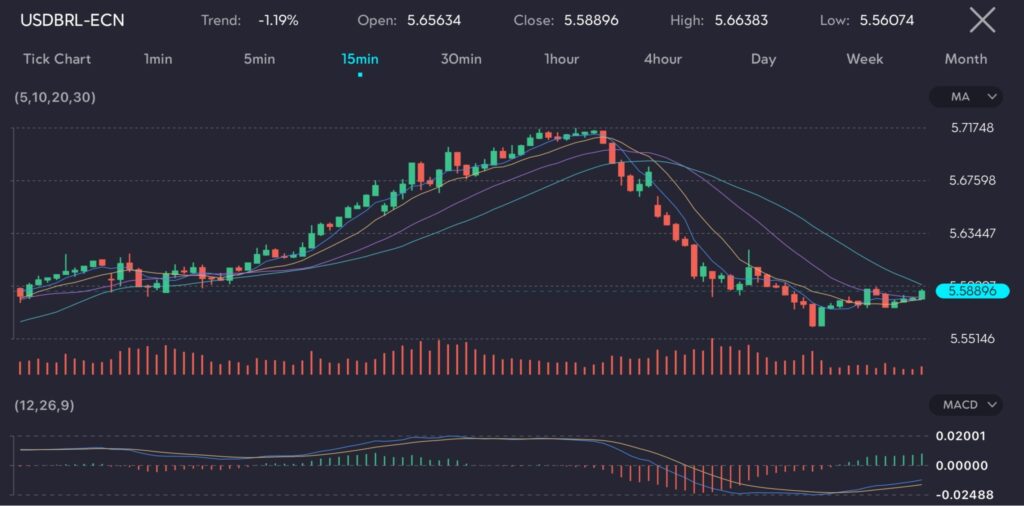Key points
- The Brazilian real strengthens to 5.56 per USD, recovering from a 1.5-year low of 5.67.
- The US dollar weakens on expectations of a more accommodative Fed policy following disappointing labor market data.
- Concerns over the fiscal management and central bank autonomy in Brazil persist.
The Brazilian real (BRL) strengthened to 5.56 per USD, rebounding from its lowest level since December 2021 of 5.67. This recovery was bolstered by the weakness in the US dollar hit by rising expectations of a more accommodative monetary policy stance by the US Federal Reserve.

Picture: The US dollar losing strength against the Brazilian real, as observed on the VT Markets app.
US economic data and Fed policy expectations
The US dollar faced pressure following disappointing June labor market data, including a missed ADP employment report and an increase in continuing unemployment claims to a two-year high.
Additionally, the services sector experienced its sharpest contraction in four years, and inflation showed signs of deceleration. These factors contributed to speculation that the Federal Reserve might adopt a looser monetary policy.
The Federal Open Market Committee (FOMC) minutes suggested the potential for easing interest rates, which further fueled this expectation.
Related article: Interest rate tug-of-war for central banks: Hawkish vs dovish
Brazilian real and domestic concerns
Despite the positive movement in the Brazilian real, ongoing concerns about the fiscal management of the country and the autonomy of central bank continue to weigh on the currency.
President Lula Da Silva recently questioned the relevance of the current high interest rates, contrasting with the defense of Campos Neto from the Central Bank of Brazil regarding its role in controlling inflation. Campos Neto also cautioned against fiscal adjustments that could hinder growth and exacerbate inflation pressures.
Implications for the Market
The interplay between US economic data and Brazilian fiscal policies presents both opportunities and risks for traders. The potential for a more accommodative Fed policy could support further gains for the BRL. However, domestic political and economic uncertainties in Brazil might limit the extent of this appreciation.
In the short term, the BRL may continue to find support if the Fed signals a more dovish stance. However, traders should remain discipline in risk management as domestic factors could undermine confidence in the fiscal and monetary stability of Brazil.









